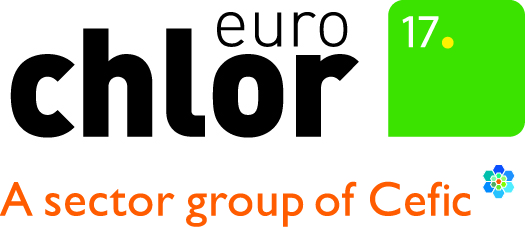SEPTEMBER 2022 CHLORINE PRODUCTION
In September, the European chlorine production reached 580,670 tonnes. With 19,356 tonnes, the September 2022 average daily production was 8.7% lower than in the previous month (August 2022: 21,208 tonnes), and 21.1% lower than in September 2021 (24,527 tonnes).
The September 2022 caustic soda stocks stood at 188,164 tonnes, i.e. 11,624 tonnes below the level of September 2021 (199,788 tonnes). The following tables give the details of chlorine production and caustic soda stocks in the EU-27 countries plus Norway, Switzerland, and the UK in September 2022.
Chlorine production & capacity utilisation - EU 27 + Norway/Switzerland/UK
| Month | Production (tonnes) | Capacity Utilisation (%) | |||
| 2021 | 2022 | % change | 2021 | 2022 | |
| January | 860,636 | 851,956 | -1.0% | 86.7% | 85.8% |
| February | 795,244 | 775,241 | -2.5% | 88.7% | 86.4% |
| March | 806,041 | 737,568 | -8.5% | 81.2% | 74.2% |
| April | 769,948 | 708,577 | -8.0% | 80.1% | 73.7% |
| May | 800,808 | 748,474 | -6.5% | 80.7% | 75.3% |
| June | 805,944 | 682,760 | -15.3% | 83.9% | 71.0% |
| 1st half year | 4,838,620 | 4,504,576 | -6.9% | 83.5% | 77.7% |
| July | 853,210 | 687,366 | -19.4% | 85.9% | 69.2% |
| August | 825,923 | 657,461 | -20.4% | 83.2% | 66.2% |
| September | 735,818 | 580,670 | -21.1% | 76.6% | 60.4% |
Caustic soda stocks (tonnes)
| 2021 | 2022 | |
| January | 233,430 | 226,493 |
| February | 254,122 | 250,434 |
| March | 206,381 | 210,522 |
| April | 207,497 | 192,315 |
| May | 192,193 | 193,168 |
| June | 174,122 | 193,054 |
| July | 194,704 | 206,008 |
| August | 216,463 | n/a |
| September | 199,788 | 188,164 |
For more information please contact:
Marleen Pauwels, Executive Director, Euro Chlor, +32 493 255 607 or [email protected]
About Euro Chlor
Euro Chlor represents 37 member companies producing chlorine at 62 manufacturing locations in 19 countries.
Note to editors:
Some of the totals for each month may vary slightly compared with figures used earlier. Please rely on the most recent information since it sometimes happens that we have to estimate when a producer is late in providing data. This is subsequently adjusted when the actual figure becomes available.


